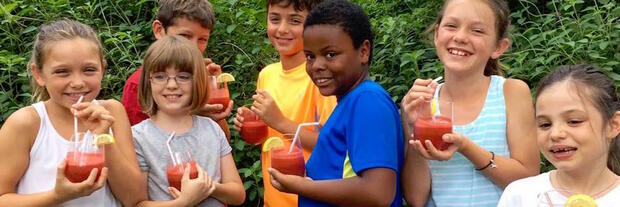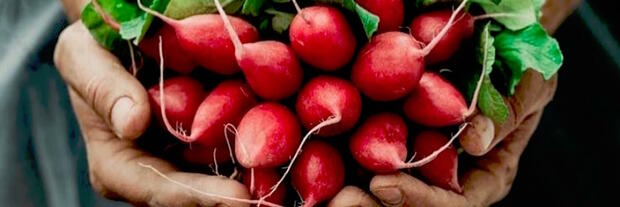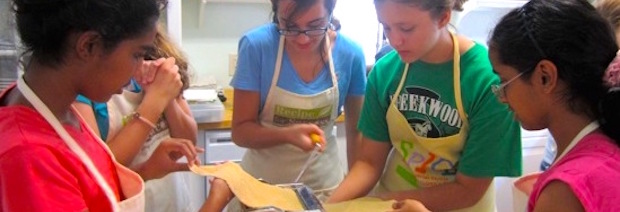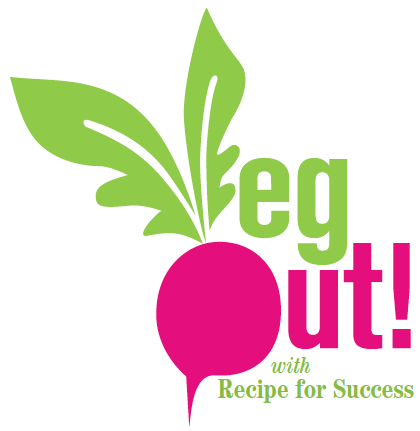April 2012 Archives
"Civilization was built on salt. Salt is transformative, its commonness, deceiving. Unlike most ingredients, it doesn't just add it's own flavor, making something saltier; it changes the very flavor profile of the thing itself..." - wholeliving.com
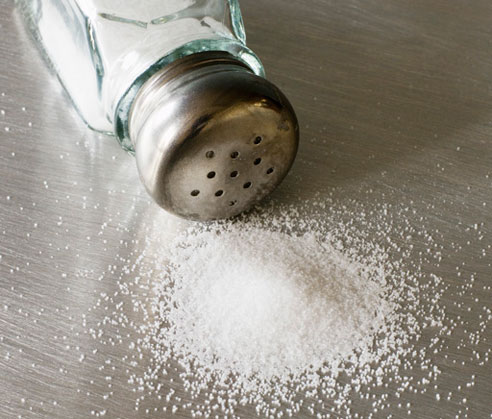 Thought salt was merely a fixture at the dinner table? Wrong.
Thought salt was merely a fixture at the dinner table? Wrong.
From currency to cures, salt has always been a staple in our civilization, preserving foods, tanning hides and dyeing cloths. The oceans contain it, the scientists seek it on other planets and an iconic image - Morton's Salt- represents it. The once majestic and revered qualities of this crystalline mineral, so important in fact that it represents one of the five basic tastes, has (relatively) recently become the culprit for (or at least a factor in) many chronic healthy problems - hypertension and Type II diabetes to name a few- a topic that seems to be at the forefront of current food news.
With the rise of fast food consumption has come the rise of (inordinate) sodium intake. A recent study, America Has Saltiest Fast Food examining six fast food chains - Burger King, Domino's, KFC, McDonald's, Pizza Hut and Subway- in six different countries showed that the U.S. Food Industry lays claim to the title of "Saltiest Fast Food," a title that surely does not come with bragging rights. It is precisely the soaring salt levels in these fast food items that make them so appealing/addictive to the palette, with some researchers claiming Salt Stimulates Brain Cells Just Like Hard Drugs that it stimulates the brain cells just like cigarettes or hard drugs.
Incremental change is the name of the game. Even if fast food giants don't completely eliminate all sodium-saturated items off their menu, they can at least begin to reduce the levels of sodium in the more popular items, easing the fast-food eating public into a healthier lifestyle.
What is the easiest way to cut your sodium intake and achieve a normal, healthy attitude towards food? Eating freshly prepared meals, that's how.
Houston elementary students in Recipe for Success Foundation's (RFS) award-winning Seed-to-Plate Nutrition Education (S2P) program are getting an early introduction into this more natural approach to eating. With hands on, interactive cooking and gardening classes, their minds are stimulated and their appetites are sated, empowering them to bring their food knowledge into their own homes and share it with their family and friends. Using only the freshest of foods- many times from their own gardens- the children get to taste the true flavors of their culinary creations, unsullied by excessive salt or additives.
Next time you go to a fast food chain, find out how much sodium is in your item of choice.
 Thought salt was merely a fixture at the dinner table? Wrong.
Thought salt was merely a fixture at the dinner table? Wrong.From currency to cures, salt has always been a staple in our civilization, preserving foods, tanning hides and dyeing cloths. The oceans contain it, the scientists seek it on other planets and an iconic image - Morton's Salt- represents it. The once majestic and revered qualities of this crystalline mineral, so important in fact that it represents one of the five basic tastes, has (relatively) recently become the culprit for (or at least a factor in) many chronic healthy problems - hypertension and Type II diabetes to name a few- a topic that seems to be at the forefront of current food news.
With the rise of fast food consumption has come the rise of (inordinate) sodium intake. A recent study, America Has Saltiest Fast Food examining six fast food chains - Burger King, Domino's, KFC, McDonald's, Pizza Hut and Subway- in six different countries showed that the U.S. Food Industry lays claim to the title of "Saltiest Fast Food," a title that surely does not come with bragging rights. It is precisely the soaring salt levels in these fast food items that make them so appealing/addictive to the palette, with some researchers claiming Salt Stimulates Brain Cells Just Like Hard Drugs that it stimulates the brain cells just like cigarettes or hard drugs.
Incremental change is the name of the game. Even if fast food giants don't completely eliminate all sodium-saturated items off their menu, they can at least begin to reduce the levels of sodium in the more popular items, easing the fast-food eating public into a healthier lifestyle.
What is the easiest way to cut your sodium intake and achieve a normal, healthy attitude towards food? Eating freshly prepared meals, that's how.
Houston elementary students in Recipe for Success Foundation's (RFS) award-winning Seed-to-Plate Nutrition Education (S2P) program are getting an early introduction into this more natural approach to eating. With hands on, interactive cooking and gardening classes, their minds are stimulated and their appetites are sated, empowering them to bring their food knowledge into their own homes and share it with their family and friends. Using only the freshest of foods- many times from their own gardens- the children get to taste the true flavors of their culinary creations, unsullied by excessive salt or additives.
Next time you go to a fast food chain, find out how much sodium is in your item of choice.
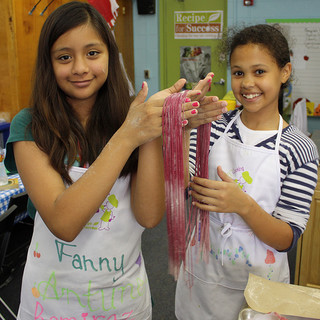 In response to a 2010 proposed class-action lawsuit (that was recently dismissed), McDonald's spokeswoman Danya Proud stated "We stand on our 30-year track record of providing a fun experience for kids and families at McDonald's." The word "fun," in this case, refers to the familiar toy that comes in every Happy Meal, a big draw for children when they are choosing where and what they want to eat.
In response to a 2010 proposed class-action lawsuit (that was recently dismissed), McDonald's spokeswoman Danya Proud stated "We stand on our 30-year track record of providing a fun experience for kids and families at McDonald's." The word "fun," in this case, refers to the familiar toy that comes in every Happy Meal, a big draw for children when they are choosing where and what they want to eat.But what if the word "fun," when referring to children's meals, took on a different connotation? What if children played with their food instead of the toy that came with their meal? No, I don't mean throwing overcooked and unwanted vegetables across the table at their younger siblings. I'm talking about an altogether different approach; I'm talking about turning the tables and actually encouraging children to participate in the cooking process, making fresh and healthy food an interactive experience, from assisting with preparation, experimenting with recipes and of course partaking in the end result, designating a positive association to a phrase that was once deemed a reprimand: "playing with your food."
Recipe for Success Foundation (RFS), leading the way in hands-on nutrition education aimed at preventing childhood obesity and encouraging long-term health, promotes interaction at every level of the learning/food process. RFS's nationally recognized Seed-to-Plate Nutrition EducationÔ (S2P) program teaches children how to grow, harvest and cook their own healthy food; the children co-pilot the food progression from the school gardens to the classroom kitchens, instilling a connection to and an enthusiasm for fresh and nutritious fare.
But who helps to positively influence children's dietary decisions once they leave the S2P classroom?
It is up to family and friends to intercede and induce an interactive and healthy approach to eating. Instead of spending 20 minutes in a car to sit in a drive thru line or waiting 30 minutes for the pizza to show up at the front door, spend a few minutes rolling meatballs for a spaghetti dish or prepping fresh vegetables for a homemade pizza. Easy, affordable and a bonding experience to boot, these activities inspire children to become more independent and self-assured about healthy eating habits, especially if they see role models such as parents or older siblings and friends helping out in the kitchen. Once a child has had fun "playing with their food" in the kitchen, they will be more apt to try new and different dishes, dishes with more vegetables and fruits, dishes that wouldn't be sold on a fast food menu.
So take charge of your very own competitive healthy food marketing campaign. Make your own Happy Meal.
What do you think about letting children "play with their food?"
In honor of national nutrition month, RFS Showcase School-Sylvan Rodriguez Elementary will put on a sweeping and stimulating art show entitled "FOODIE: Food as Art, Art as Food." FOODIE, a school wide display that features art that is inspired by or made by food, combines the students' foray into the art world with their appreciation and understanding of healthy foods.
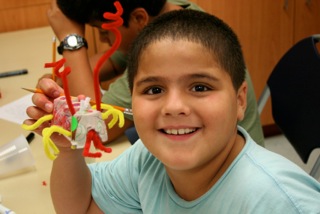 "The focus of the RFS Seed-to-Plate Nutrition Education™ is to create a campus wide culture of health--not simply limit the subject of healthy eating to the RFS gardening and cooking classes, and the Foodie project is a wonderful example of the sort of creative ways our partner schools can approach engaging projects that complement our core work," remarked Chef Kendall Moister, the RFS Team Leader at Rodriguez. "Thanks to resourceful and collaborative efforts made by Rodriguez Elementary Art Director, Michael Bourquin, this is a perfect example of how to integrate positive healthy messaging into other school subjects and help us create a more fluid and far-reaching platform. Besides having a hit on his hands at Rodriguez, his hard work has paved the way for our other partner schools to implement a Foodie project of their own."
"The focus of the RFS Seed-to-Plate Nutrition Education™ is to create a campus wide culture of health--not simply limit the subject of healthy eating to the RFS gardening and cooking classes, and the Foodie project is a wonderful example of the sort of creative ways our partner schools can approach engaging projects that complement our core work," remarked Chef Kendall Moister, the RFS Team Leader at Rodriguez. "Thanks to resourceful and collaborative efforts made by Rodriguez Elementary Art Director, Michael Bourquin, this is a perfect example of how to integrate positive healthy messaging into other school subjects and help us create a more fluid and far-reaching platform. Besides having a hit on his hands at Rodriguez, his hard work has paved the way for our other partner schools to implement a Foodie project of their own."
Opening on April 19, FOODIE will be on display for the remainder of the school year, a constant reminder of the combined effort that was put forth and the multi-subject lessons that were gleaned from the extensive project. From pre-schoolers to 5th graders, students of all ages and backgrounds participated in the school wide project, which has been in production since the beginning of the school year. "I like to give these kids a much larger chunk of the world than they are used to," says Bourquin. Multiple educational perspectives and art avenues will be explored in this eye-catching and thought provoking art show.
Beginning as a pilot school in Recipe for Success Foundation's (RFS) Seed-to-Plate Nutrition Education Program (S2P), Rodriguez Elementary - now in its 6th year of a fully integrated ancillary partnership with RFS that serves all grades - extends the boundaries of RFS Seed-to-Plate subject matter with its comprehensive and inspiring works of art.
"I've always wanted to do a show that brought in the food element. I think we've really pushed the definition of what a 'foodie' is," says Bourquin. From a marketing campaign for Super foods to time lapse photography of the school's Recipe Garden and from food paintings to compost sculptures, even the school Recipe Garden beds will be incorporated into this not-so-average exhibit. Approaching the unity of food and art in an organic manner, FOODIE breaks down barriers that normally deny children the opportunity to fully explore the two worlds and emboldens them to "think outside the box."
"I have watched the RFS Seed-to-Plate Nutrition Education™ project develop from a program reserved for 4th graders to a fully integrated part of our school's curriculum and culture--touching every student," says Bourquin. Just as the RFS Seed-to-Plate Nutrition Education™ program focuses on children understand, appreciate and eat their food, Bourquin's Foodie art project is on a mission to increase students' confidence and independence in the way they approach art, by encouraging dialogue, interaction and independence.
What kind of interactive projects did you participate in for National Nutrition Month, Earth Day or National Gardening Month?
 "The focus of the RFS Seed-to-Plate Nutrition Education™ is to create a campus wide culture of health--not simply limit the subject of healthy eating to the RFS gardening and cooking classes, and the Foodie project is a wonderful example of the sort of creative ways our partner schools can approach engaging projects that complement our core work," remarked Chef Kendall Moister, the RFS Team Leader at Rodriguez. "Thanks to resourceful and collaborative efforts made by Rodriguez Elementary Art Director, Michael Bourquin, this is a perfect example of how to integrate positive healthy messaging into other school subjects and help us create a more fluid and far-reaching platform. Besides having a hit on his hands at Rodriguez, his hard work has paved the way for our other partner schools to implement a Foodie project of their own."
"The focus of the RFS Seed-to-Plate Nutrition Education™ is to create a campus wide culture of health--not simply limit the subject of healthy eating to the RFS gardening and cooking classes, and the Foodie project is a wonderful example of the sort of creative ways our partner schools can approach engaging projects that complement our core work," remarked Chef Kendall Moister, the RFS Team Leader at Rodriguez. "Thanks to resourceful and collaborative efforts made by Rodriguez Elementary Art Director, Michael Bourquin, this is a perfect example of how to integrate positive healthy messaging into other school subjects and help us create a more fluid and far-reaching platform. Besides having a hit on his hands at Rodriguez, his hard work has paved the way for our other partner schools to implement a Foodie project of their own."Opening on April 19, FOODIE will be on display for the remainder of the school year, a constant reminder of the combined effort that was put forth and the multi-subject lessons that were gleaned from the extensive project. From pre-schoolers to 5th graders, students of all ages and backgrounds participated in the school wide project, which has been in production since the beginning of the school year. "I like to give these kids a much larger chunk of the world than they are used to," says Bourquin. Multiple educational perspectives and art avenues will be explored in this eye-catching and thought provoking art show.
Beginning as a pilot school in Recipe for Success Foundation's (RFS) Seed-to-Plate Nutrition Education Program (S2P), Rodriguez Elementary - now in its 6th year of a fully integrated ancillary partnership with RFS that serves all grades - extends the boundaries of RFS Seed-to-Plate subject matter with its comprehensive and inspiring works of art.
"I've always wanted to do a show that brought in the food element. I think we've really pushed the definition of what a 'foodie' is," says Bourquin. From a marketing campaign for Super foods to time lapse photography of the school's Recipe Garden and from food paintings to compost sculptures, even the school Recipe Garden beds will be incorporated into this not-so-average exhibit. Approaching the unity of food and art in an organic manner, FOODIE breaks down barriers that normally deny children the opportunity to fully explore the two worlds and emboldens them to "think outside the box."
"I have watched the RFS Seed-to-Plate Nutrition Education™ project develop from a program reserved for 4th graders to a fully integrated part of our school's curriculum and culture--touching every student," says Bourquin. Just as the RFS Seed-to-Plate Nutrition Education™ program focuses on children understand, appreciate and eat their food, Bourquin's Foodie art project is on a mission to increase students' confidence and independence in the way they approach art, by encouraging dialogue, interaction and independence.
What kind of interactive projects did you participate in for National Nutrition Month, Earth Day or National Gardening Month?



